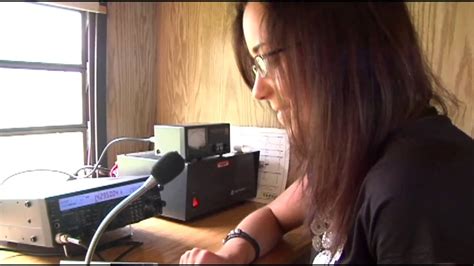June 24th to June 25th is “Field Day” for Amateur Radio operators
Our past weather events, or other natural to man-made disasters have disrupted our daily lives in some way. It could be on a local municipal area to a larger provincial scale. Daily attacks on our infrastructure are very real and can have implications that will impact everyone.
Imagine, if the Power Grid, cellular network and Internet is disabled. Our ability to communicate with our loved ones, conduct business and support our every day living in our high tech world. We would not be able to talk to our loved ones, make calls for fire or police, medical services… Cities, Townships can not communicate with each other, emergency services can not communicate with each other.
Very few people know that if a major disaster happens, the services for cell phone access will be limited for the general population to give more frequencies / data to emergency providers. But phones will be tied up while 1 call is made at a time, all the other’s trying that number will get a busy signal.
Amateur Radio Services are supported by all free governments around the world. “Ham Radio” as it is widely known is a technical hobby with a focus on communications by many methods. In Canada the Amateur Radio Service is supported by Innovation, Science and Economic Development (ISED) Canada. Amateur Radio operators are required to pass exams for basic electronics, antennas, communication regulations and some radio operating questions. Canada has 2 classes of licenses, the Basic and the Advanced qualifications.
The Canadian Amateur Radio operators spend thousands of dollars on equipment, conduct drills, study and contribute to the advancement of radio technology. Did you know that hams invented the first walkie talkie, the pager, fax machine, cell phone technology, computer digital communications and the Automatic Packet Reporting System. (APRS). Amateur Radio Operators are also building satellites and experimenting with space communication.
Most Amateur Radio operators belong to a local radio club, which has resources as well as communication sites (repeaters) already established with radio equipment that can cover a wide geographic area. In our area, we have the Seaway Valley Amateur Radio Club and the Prescott-Russell Amateur Radio Club Inc. The combined resources of local clubs across Canada stand at the ready with trained radio operators and equipment. These clubs have assets which if had to be provided by a municipal city or town ship would cost millions of dollars and would require specialized employee’s. Amateur Radio has served as an educational gateway for our children since the 1920’s. The Ham radio community have been creating technicians and engineers for tomorrow’s jobs.
Every year, Amateur Radio operators in North America spend 24 hours between June 24th to June 25th on an emergency communications exercise called “Field Day”. Rapid deployment of radio communications under emergency conditions started in 1933. The Seaway Valley Amateur Radio Club Inc. will be involved in this year’s Field Day exercise which will take place in St. Andrews West. If you are interested in visiting during Field Day or interested in Amateur radio in general and communications please come on by.
Dates: June 24th to June 25th 2023 Times: 2:00 PM to 6:00 PM each day
Location: 4865 HWY 138 , St. Andrews West K0C2A0Web Sources
Radio Amateurs of Canada https://www.rac.ca
Seaway Valley Amateur Radio Club https://www.svarc.ca
Prescott-Russell Amateur Radio Club https://prarc.tech
Field Day (amateur Radio) https://en.wikipedia.org/wiki/Field_Day_(amateur_radio)
Innovation, Science and Economic Development Canada (ISED)
Interesting article on supporting deployed Canadian Forces personnel through Amateur Radio around the world.
Disclaimer
I hold an Advanced Amateur radio license issued after completion of 2 sets of exams given by
Innovation, Science and Economic Development Canada. (Industry Canada). My government issued callsign is VE2EQL. I have been involved in the Amateur Radio communications environment since the mid 1980’s.





